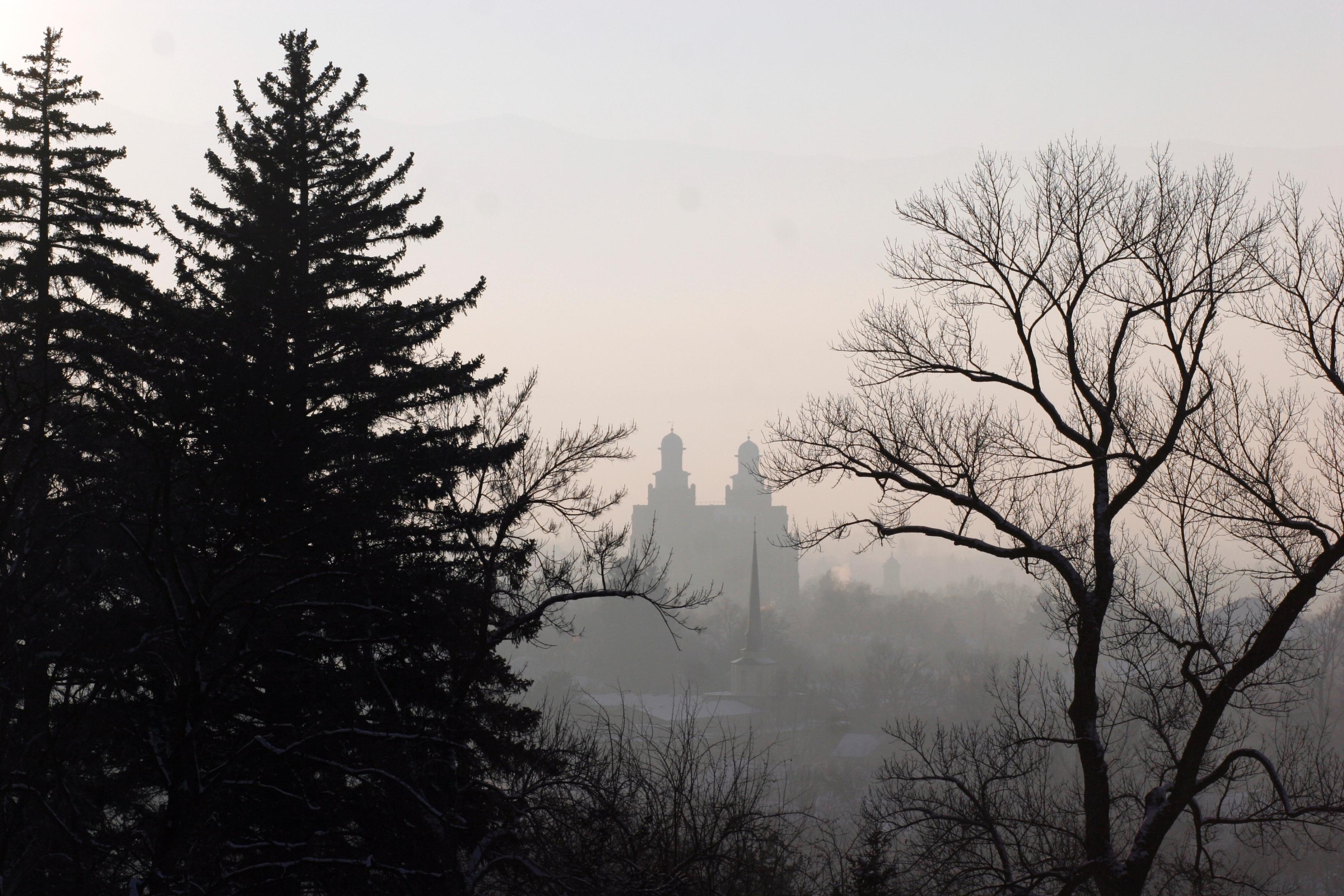Cache Valley’s air often ranks as nation’s worst
Logan was ranked No. 1 for the worst air in the nation on Jan. 8-9, according to the U.S. Environmental Protection Agency’s (EPA) website www.airnow.gov.
Randy Martin, USU associate research professor for the department of civil and environmental engineering said, “We have the perfect storm of conditions in Cache Valley, almost without exemption. Logan’s particulate matter (PM) 2.5 issues are associated with inversions, but when you have an inversion, plus a lot of ammonium, automobiles and cold temperatures, it forms the PM 2.5.”
By Jan. 9, Logan’s air quality tripled the EPA standard of PM 2.5 allowed in the air.
“If impressions of precursor gasses increase, and if we have an inversion at the same time, we can see an increase in PM 2.5,” Martin said. “We have seen, when we look at traffic counter data, an increase in PM2.5, but remember, to get the bad level, we have to have them both mixed together.”
Martin said what occurred last week was a sustained inversion. Because we are in a small valley with low temperatures, it condenses the air particles and inversions in Cache Valley tend to last longer. This gives PM 2.5 more time to build to the higher levels.
Martin said an inversion is a warming of the air temperature with altitude. When the air is warm at the base of the earth, it filters and disperses. However, when cold air is at the base of the earth and warm air is above it, the cold air inhibits the warm air from filtering out the pollutants in the air. He said he tells his students that another reason why the air is trapped is because we live in a bathtub, with mountains surrounding us on all sides dis-enabling the air to move. The air is like a river, if there is nowhere for it to go, it forms a lake.
“Pzm 2.5 can be made up of a lot of different things,” Martin said. He explained that PM 2.5 can contained of mainly things, but the two main pollutants are caused from the agricultural industry and vehicle emissions to create ammonium nitrate.
Cache Valley gets a high source of ammonium from the agricultural industry because of poor waste management, and a high source of nitrate from vehicle emissions.
“Ammonium nitrate makes up about 50 percent of PM 2.5 mass,” Martin said.
USU toxicology professor Roger Coulombe said animal studies have shown that PM 2.5 particles can get into the brain, vascular system, cells, and tissues.
Coulombe said the EPA originally had a standard set at 65 micrograms per meter cubed (µg/m3) of PM 2.5 particles allowed in the atmosphere. In 2001, that level was dropped to 35 µg/m3.
Martin said that when there is 35 µg/m3 in the atmosphere, a person is breathing one hundred million PM 2.5 particles within 24 hours on average.
The EPA standard set in 2001 translates into allowing a given area to exceed the standard of 35 µg/m3 of PM 2.5 seven or eight times per year, Martin said.
“There is also a long-term, annual average, but so far we are okay on that one,” Martin said. “If an area averages an excess over three years, they are declared a non-attainment area and EPA rules kick in. Basically, the local and state agencies have to develop a plan, a State Implementation Plan, to describe how they are going to clean the air and maintain it.”
Logan city is doing very little to decrease the pollution, Martin said.
“There was a new burn ordinance established at the county level, but wood smoke is a very small part of our problem,” Davis said. “So far, the cities/county have really taken a wait-and-see-approach for the most part.”
“We cannot do anything about the weather, in Logan we just have an excess of ammonia, so the only thing we can control is how we behave with our vehicles,” Martin said. “In general, five to 10 percent of the vehicles produce 25 to 50 percent of the pollutants. Logan should have an inspection program to identify pollution vehicles. Most cars made after 1996 will pass.”
Visit cleanair.utah.gov for more information and suggestions for reducing pollution.
– kayla.barclay@aggiemail.usu.edu

